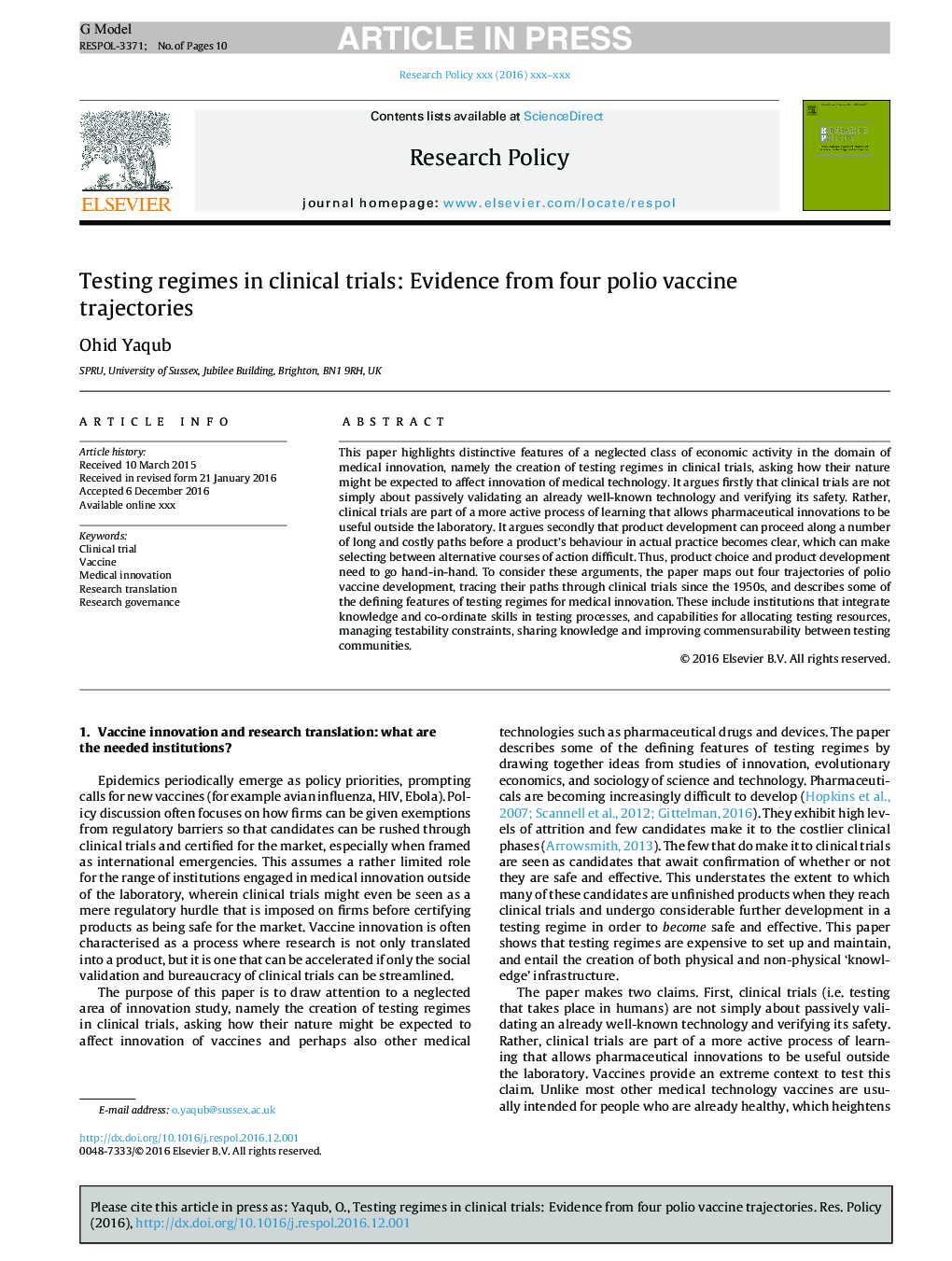| Article ID | Journal | Published Year | Pages | File Type |
|---|---|---|---|---|
| 5104037 | Research Policy | 2017 | 10 Pages |
Abstract
This paper highlights distinctive features of a neglected class of economic activity in the domain of medical innovation, namely the creation of testing regimes in clinical trials, asking how their nature might be expected to affect innovation of medical technology. It argues firstly that clinical trials are not simply about passively validating an already well-known technology and verifying its safety. Rather, clinical trials are part of a more active process of learning that allows pharmaceutical innovations to be useful outside the laboratory. It argues secondly that product development can proceed along a number of long and costly paths before a product's behaviour in actual practice becomes clear, which can make selecting between alternative courses of action difficult. Thus, product choice and product development need to go hand-in-hand. To consider these arguments, the paper maps out four trajectories of polio vaccine development, tracing their paths through clinical trials since the 1950s, and describes some of the defining features of testing regimes for medical innovation. These include institutions that integrate knowledge and co-ordinate skills in testing processes, and capabilities for allocating testing resources, managing testability constraints, sharing knowledge and improving commensurability between testing communities.
Related Topics
Social Sciences and Humanities
Business, Management and Accounting
Business and International Management
Authors
Ohid Yaqub,
